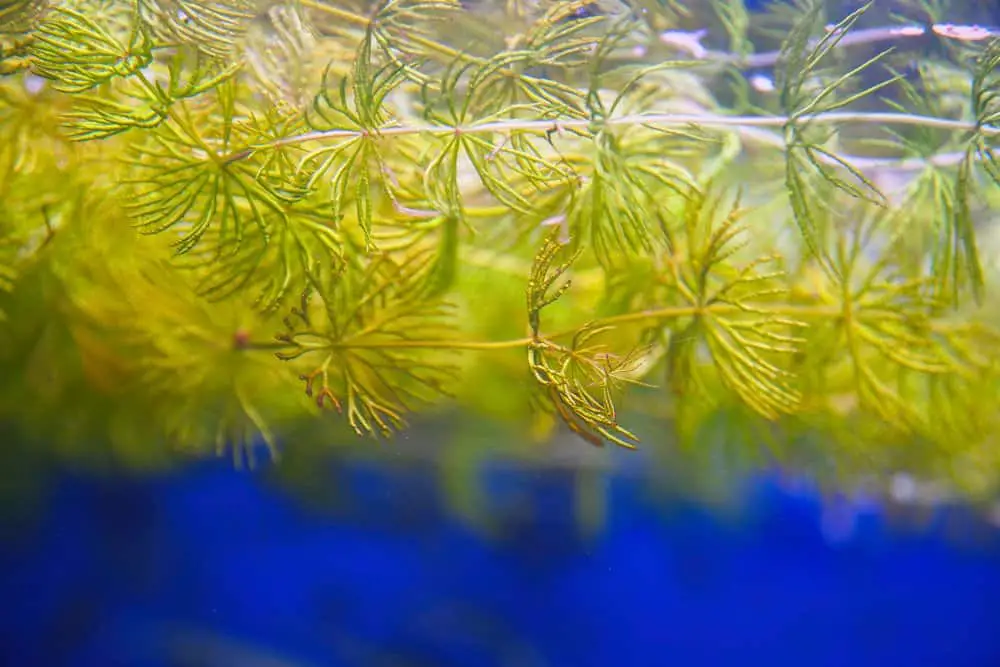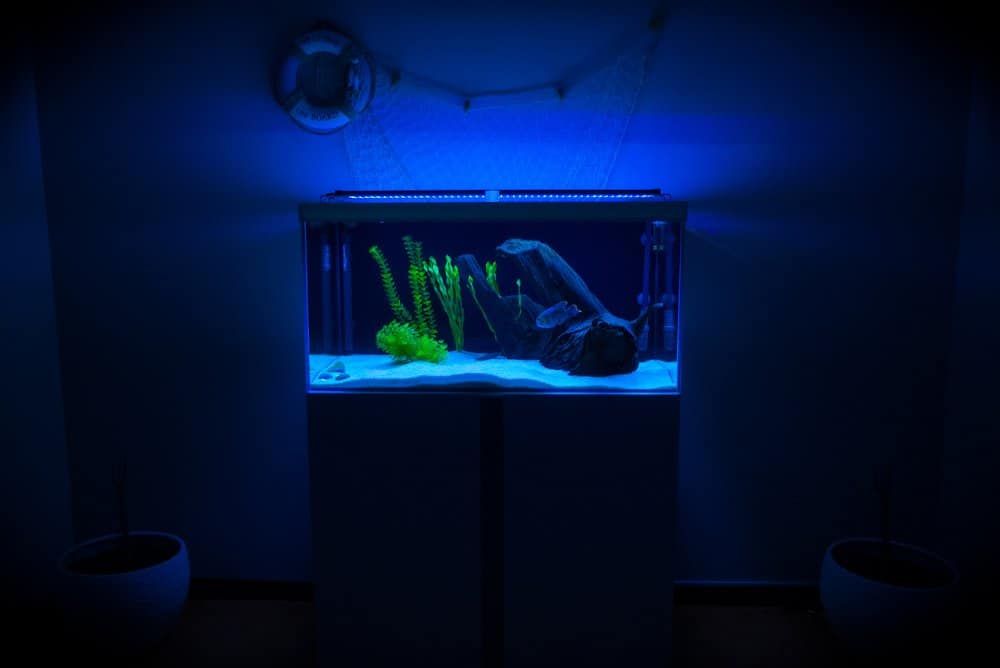Live aquarium plants add more life to your fish tank. Not only do plants make an aquarium visually appealing, they also add oxygen to the water and help to remove ammonia. The Aquarium Plants Hub is where we answer your questions about keeping live plants alongside your fish.
Are live plants good for my aquarium?
Live plants are very good for an aquarium. Aquarium plants absorb carbon dioxide and release oxygen, which helps your fish to breathe, and they remove harmful chemicals such as ammonia, nitrite and nitrate from the water. Aquarium plants also look great and give your fish places to hide and explore. All of this helps to create a healthier environment for your aquarium fish.
What are the best aquarium plants?
The best aquarium plants are hardy and easy to care for, add lots of oxygen into the water, and look great in the aquarium. The plants below tick all of these boxes, making them some of the best aquarium plants you can buy today.
Please note that images and links in this article direct to Amazon. As an Amazon Associate, Memfish.net earns from qualifying purchases.
Hornwort
Hornwort is one of the most popular aquarium plants as it is very easy to grow. It is also very flexible, as it can either be planted in the aquarium substrate or left to float freely. Healthy hornwort has an attractive deep green color.
Amazon Sword
Originally from the Amazon River basin and with pointy sword-like leaves, Amazon Sword is a fantastic background plant. It can grow up to 18 inches and has dense leafy foliage. Its light green color creates a beautiful backdrop for your fish.
Java Fern
Java Fern looks fantastic and grows well when attached to a rock or a piece of driftwood. Don’t bury the base of the plant deep into the substrate. Instead, find something like a rock and attached the Java Fern to it.
Duckweed
Duckweed floats on the surface of the aquarium, adding interest to an area where there isn’t usually much to see. Just be careful not to let it grow too much and cover the whole surface, which can block light and lower oxygen levels in the water.
Java Moss
Java Moss is a great addition to an aquarium, as it can create a very natural-looking carpet of moss over rocks and driftwood. It also provides food and a safe hiding place for smaller fish and newborn fry. Java Moss can grow on objects or be left floating on the water’s surface.
Water Wisteria
Water Wisteria is another fantastic background plant. It grows tall and thick, creating a bright green bushy area where fish can hide. Just be careful not to let Water Wisteria grow so much that it blocks out light. You will need to cut it back occasionally.
Moneywort
Moneywort can be grown either fully or only partially submerged in water. Allowing your Moneywort plants to grow tall until they start to stick out of the water can add an interesting new dimension to the look of your aquarium.
Water Lettuce
Water Lettuce is best suited for larger aquariums and ponds, ideally those with smaller fish that will not eat the roots of the plant. In the right conditions, it can provide shade for fish that want it and add interest at the water’s surface.
Vallisneria Spiralis
Vallisneria Spiralis is notable for its long thin leaves. This makes it a good background plant and distinguishes it from other background plants, which tend to have bushy or leafy foliage. It looks fantastic when swaying in flowing water.
What are the best floating aquarium plants?
Our top pick for the title of best floating aquarium plant is Hornwort. It is hardy, grows quickly, is compatible with virtually all aquarium fish, and has a beautiful wispy appearance.

Other good choices of floating aquarium plant include duckweed and Java Moss. As with all aquarium plants – and particularly those that float freely – you just need to be careful not to let them grow so much that they block out light and not to let small pieces clog your filter.
Duckweed is one of the best floating aquarium plants. Just don’t let it completely cover the water’s surface.
Java Moss can be attached to objects, but it’s also one of the best floating aquarium plants.
What are the easiest aquarium plants?
The easiest aquarium plants for beginners include Hornwort, Java Moss and Water Wisteria. You can easily set up an attractive aquarium with these three plants. Create a background of Water Wisteria, add Java Moss to rocks and driftwood, and allow Hornwort to float at the water’s surface, with perhaps some Hornwort branches anchored in the substrate too.
This aquarium plant setup will grow well in most conditions, be easy to look after, and will give your fish plenty of plants to nibble and explore.
What do aquarium plants need?
Live aquarium plants need a few things in order to survive and thrive.
They need light in order for photosynthesis to take place. Just as plants that grow on the land release oxygen into the air, aquatic plants release oxygen into the water. Photosynthesis is the process that makes this happen.
Aquarium plants need nutrients, which they get from the water and – in the case of rooted plants – from the aquarium substrate. You may need to add aquarium plant fertilizer to ensure your plants get all the nutrients they need.
- Aquarium plant food
- Promotes healthy aquarium plants
- For freshwater tanks
- Item Package weight : 1.25 pounds
And finally, they need a suitable location to grow. Exactly what this looks like depends upon the type of plant. Some plants, such as Java Moss and Hornwort can simply float at the water’s surface, while others need to be rooted in the substrate or attached to driftwood or other objects.
Do aquarium plants need soil?
Whether aquarium plants need soil depends upon the type of plant. Some plants that do no need soil include Duckweed, which floats on the surface of the water, and Java Moss, which grows on driftwood and rocks. However, plants with roots, like Amazon Sword, do need soil in order to survive.
Though some aquarium plants do need soil, you don’t necessarily have to cover the base of your tank in a soil substrate. It is possible to grow aquarium plants in weighted pots that sit on the bottom of the tank.
Can I put live aquarium plants in gravel?
Whether you can put aquarium plants in gravel depends upon the type of plant. Some plants will rot if their bases are placed too deeply under gravel, while others need nutrient rich soil in order to grow.
Floating plants, such as hornwort, can quite easily be attached to a rock or other weight and then covered in a thin layer of gravel. Even though they don’t actually grow roots, the plant will then appear to be growing out of the gravel substrate.
What aquarium plants can grow without substrate?
Any floating aquarium plants can grow without substrate. Examples include Hornwort, Duckweed, Water Lettuce and Java Moss.
How many hours of light do aquarium plants need?
Different plants have different lighting needs, so it’s always best to research the requirements of the type of plant you have in your aquarium. Generally speaking, lights should be left on for up to 12 hours per day. If the light is left on longer than this then you might start to see algae growing on the tank surfaces and in the water.
Excessive amounts of light can be bad for your fish. Just like people, most fish like to have a day/night cycle of light and dark hours.

Can aquarium plants grow with LED lights?
As long as they are bright enough and emit a wide spectrum of light, a standard LED light will be perfectly adequate for growing healthy aquarium plants. We highly recommend LED lights, as they are energy efficient, which is important when you’ll be keeping the light on up to 12 hours per day, 7 days a week.
Is blue light good for aquarium plants?
A kind of blue light called ‘actinic blue’ is excellent for promoting thick bushy growth of aquarium plants. It also makes an aquarium look great!
We recommend keeping a blue light as a supplementary light. You can then use a white light during the day and the blue light in the early morning and evening, to ease your fish and plants through the transition between day and night.
- 12 LEDs, suitable for tank length: 12"
- Brings out the color of everything in tank, creates a wonderful aquascape
- Completely waterproof, totally sealed design for underwater work
- 2 suction cups allow you to fix the submersible fish tank light to the specific place as you wish. Please note, if you use the light out of water, you need moisten the suction cups first so they can hold tightly
- Safety low voltage 12V DC design, energy efficient, and suitable for both freshwater and saltwater
How long do aquarium plants live?
Most aquarium plants do not have a fixed lifespan and if cared for properly will live indefinitely. Even as some branches and leaves die away, new shoots will grow to take their place.
Many aquarium plants grow quickly, so even just a small piece of plant can grow to fill an entire aquarium surface or background and will remain in place for many years to come.
What should I read next?
If you’d like to learn more, we recommend exploring our aquatic plant articles or finding out more about freshwater fish, saltwater fish, fish tanks, or aquarium equipment.











